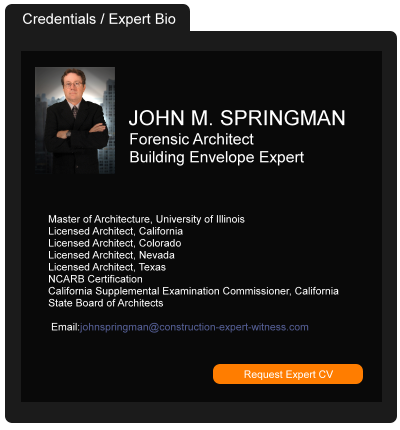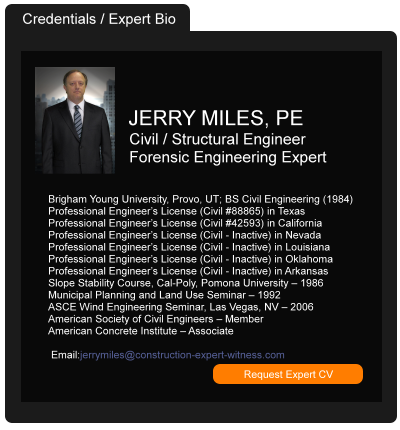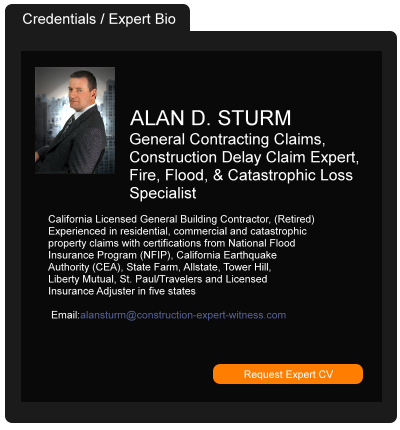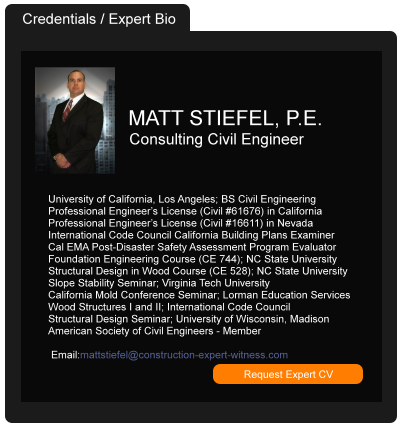Insurer Cannot Abandon Defense Agreement on Underlying Asbestos Claims Against Insured
June 12, 2023 —
Tred R. Eyerly - Insurance Law HawaiiThe court found that the insurer continued to be bound by a defense agreement entered with the insured who merged with another company. Continental Ins. Co. v. Neles-Jamesbury, Inc., 2023 U.S. Dist. LEXIS 52521 (D. Mass. March 28, 2023).
In 1990, Neles-Jamesbury became the sucessor by merger to the liabilities of Jamesbury Corp. and Neles, Inc. The companies were both in the business of manufacturing and selling valves.
Continental issued two primary CGL policies to Neles, Inc. from 1986 to 1988. After the merger, Neles-Jamesbury was involved in numerous lawsuits that alleged bodily injury from asbestos exposure. Due to the continuing question of whether the policies created duties for Continental, the parties entered into a 2007 Cost Sharing Agreement, which served to clarify and define their respective obligations and coverage in the lawsuits. The agreement noted that Continental wanted to avoid the expense and uncertainties of litigation over defense obligations.
Read the court decisionRead the full story...Reprinted courtesy of
Tred R. Eyerly, Damon Key Leong Kupchak HastertMr. Eyerly may be contacted at
te@hawaiilawyer.com
No Global MDL for COVID Business Interruption Claims, but Panel Will Consider Separate Consolidated Proceedings for Lloyds, Cincinnati, Hartford, Society
August 24, 2020 —
Eric B. Hermanson & Konrad R. Krebs - White and WilliamsIn a widely anticipated ruling, the Judicial Panel on Multidistrict Litigation has denied two motions to centralize pretrial proceedings in hundreds of federal cases seeking coverage for business interruption losses caused by the COVID-19 pandemic. However, the Panel has ordered expedited briefing on whether four separate consolidated proceedings should be set up for four insurers – Cincinnati, Society, Hartford, and Lloyds – who appear to be named in the largest number of claims.
In seeking a single, industry-wide MDL proceeding, some plaintiffs had argued that common questions predominated across the hundreds of pending federal suits: namely, [1] the question of what constituted ‘physical loss or damage’ to property, under the allegedly standardized terms of various insurers’ policies; [2] the question whether various government closure orders should trigger coverage under those policies, and [3] the question whether any exclusions, particularly virus exclusions, applied.
Reprinted courtesy of
Eric B. Hermanson, White and Williams and
Konrad R. Krebs, White and Williams
Mr. Hermanson may be contacted at hermansone@whiteandwilliams.com
Mr. Krebs may be contacted at krebsk@whiteandwilliams.com
Read the court decisionRead the full story...Reprinted courtesy of
Partner Denis Moriarty and Of Counsel William Baumgaertner Listed in The Best Lawyers in America© 2017
September 08, 2016 —
Haight Brown & Bonesteel LLPPartner Denis Moriarty and Of Counsel William Baumgaertner were selected by their peers for inclusion in The Best Lawyers in America© 2017. This marks the fifth consecutive year Mr. Moriarty has been listed for his work in insurance law, and this marks the eleventh year Mr. Baumgaertner has been listed for his defendants’ and plaintiffs’ work in personal injury and product liability litigation.
Read the court decisionRead the full story...Reprinted courtesy of
California Mediation Confidentiality May Apply to Third Party “Participants” Retained to Provide Analysis
November 02, 2017 —
Tony Carucci - Snell & Wilmer Real Estate Litigation BlogCalifornia Evidence Code section 1119 governs the general admissibility of oral and written communications generated during the mediation process. Section 1119(a) provides that “[n]o evidence of anything said or any admission made
for the purpose of, in the course of, or pursuant to, a mediation . . . is admissible or subject to discovery, and disclosure of the evidence shall not be compelled, in any . . . civil action . . . .” Cal. Evid. Code § 1119(a) (emphasis added). Similarly, section 1119(b) bars discovery or admission in evidence of any “writing . . . prepared
for the purpose of, in the course of, or pursuant to, a mediation . . . .” Cal. Evid. Code § 1119(b) (emphasis added). Finally, section 1119(c) provides that “[a]ll communications, negotiations, or settlement discussions by and between
participants in the course of a mediation . . . shall remain confidential.” Cal. Evid. Code § 1119(c) (emphasis added).
Read the court decisionRead the full story...Reprinted courtesy of
Tony Carucci, Snell & WilmerMr. Carucci may be contacted at
acarucci@swlaw.com
Breaking The Ice: A Policyholder's Guide to Insurance Coverage for Texas Winter Storm Uri Claims
August 30, 2021 —
Kelly A. Johnson - Saxe Doernberger & Vita, P.C.The devastating extreme cold weather event in Texas often referred to as Winter Storm Uri, which lasted from February 14 to February 18, 2021, caused significant damages to homes and businesses in the region. Temperatures during the winter storm were the coldest on record since 1883, with some areas reaching as low as negative 6 degrees.4 Millions of Texans were impacted and many lives were lost.
Insurance analysts predict that Uri will lead to the largest number of insurance claims in the state, totaling $20 billion in claimed losses.5 In fact, Uri is set to surpass Hurricane Harvey as the most devastating natural disaster in Texas, which resulted in $19 billion in insured losses. Further, Uri will be the largest insured loss from a United States winter storm in the industry’s history.6
The catastrophic Uri losses range from damage to property caused by the bursting of frozen pipes, collapsed roofs, weakened structures, loss of power, lack of public utility services, and the expenses incurred in the disruption of normal business operations. In addition, some commercial businesses were unable to operate due to bad weather conditions on the roads, while others were forced to halt operations due to power outages.
Read the court decisionRead the full story...Reprinted courtesy of
Kelly A. Johnson, Saxe Doernberger & Vita, P.C.Ms. Johnson may be contacted at
KJohnson@sdvlaw.com
Spearin Doctrine 100 Years Old and Still Thriving in the Design-Build Delivery World
January 09, 2019 —
John P. Ahlers - Ahlers Cressman & Sleight PLLCThe Supreme Court’s ruling in United States v. Spearin, [1] also referred to as the Spearin doctrine, is a landmark construction decision.[2] The Spearin doctrine provides that the Owner impliedly warrants the information, plans and specifications which an Owner provides to a General Contractor. If a Contractor is bound to build according to plans and specifications prepared by the Owner, the Contractor will not be responsible for the consequences of defects in the plans and specifications.
Read the court decisionRead the full story...Reprinted courtesy of
John P. Ahlers, Ahlers Cressman & Sleight PLLCMr. Ahlers may be contacted at
john.ahlers@acslawyers.com
NY Court Holds Excess Liability Coverage Could Never be Triggered Where Employers’ Liability Policy Provided Unlimited Insurance Coverage
February 28, 2018 —
Theresa A. Guertin and Samantha M. Martino - SDV Blog In a potentially significant development in New York insurance law, a recent appellate level decision held that an excess liability policy was not obligated to provide coverage where the underlying employer’s liability policy provided unlimited coverage pursuant to New York regulations.
The
Arthur Vincent & Sons Construction, Inc. v. Century Surety Insurance Co.1 case arose out of an underlying wrongful death claim. Fordham University hired Arthur Vincent and Sons Construction, Inc. (“AVSC”) to install a new roof on its Lewis Calder Center. As is typical of most construction contracts, AVSC agreed to indemnify the University against any claims arising out of its negligence, and to name the University as an additional insured on its commercial general liability policy. AVSC was insured by three policies: (1) a worker’s compensation and employer’s liability policy issued by Commerce and Industry Insur¬ance Company (“CIIC”); (2) a primary CGL policy issued by Century Surety Insurance Company (“Century”); and (3) an excess liability policy issued by Admiral Insurance Company (“Admiral”).
Reprinted courtesy of
Theresa A. Guertin, Saxe Doernberger & Vita, P.C. and
Samantha M. Martino, Saxe Doernberger & Vita, P.C.
Ms. Guertin may be contacted at tag@sdvlaw.com
Ms. Martino may be contacted at smm@sdvlaw.com
Read the court decisionRead the full story...Reprinted courtesy of
Report: Construction Firms Could Better Protect Workers From Noise Hazards
April 17, 2019 —
Joanna Masterson - Construction ExecutiveGiven that about three-quarters of construction workers are exposed to noise levels above the recommended limit, 83 percent of the 237 contractors surveyed for a new Dodge Data & Analytics SmartMarket Brief say they’ve purchased quieter equipment, yet well over half of those firms report their company could do better.
Additionally, 85 percent of contractors report using hearing protection onsite more than 50 percent of the time, yet less than half say they always use it, suggesting a significant opportunity for improvement in the industry. Digging deeper, the survey determined small companies lag behind large and midsize ones in the use of hearing protection. Also, half of general contractors report always using hearing protection, compared to about one-third of trade contractors.
Reprinted courtesy of
Joanna Masterson, Construction Executive, a publication of Associated Builders and Contractors. All rights reserved.
Read the court decisionRead the full story...Reprinted courtesy of


































































